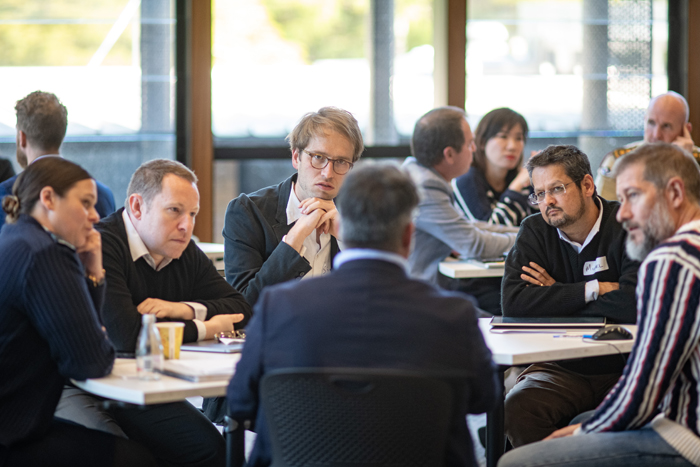In 2020-2021, we helped to launch the Defence Innovation Bridge in partnership with the UQ Business School and the Department of Defence.
The Challenge

Sovereign states now face threats from adversaries with unconventional attack technologies, able to harness the power of social networks, encryption, GPS, low-cost drones, 3D printers, and ubiquitous internet and smartphones. In contrast to the agility of many of our adversaries, advanced defence agencies have huge investments in existing land, air and ocean hard and soft infrastructure but are slower to adopt new technologies. The Defence Innovation Bridge aims to provide Australia with a new model for innovation by matching defence problems with solutions providers.
The Solution
We designed a bespoke workshop to help researchers in other disciplines ranging from robotics and cybersecurity work with defence personnel and industry experts from start-ups and large corporates like Boeing. Together, we helped them imagine and interrogate a plausible near-future scenario. Using our extensive experience in storytelling, we translated their multiple kinds of expertise to identify tactical and operational problems that can be solved today. A select group of MBA students will now work on solving these urgent problems in a semester-long course to develop and commercialize innovative prototypes.
Workshop Highlights
One of the highlights of the day was the matrix game, a low-tech tool for scenario modelling and simulation. In matrix games, players play characters and work together to generate a credible narrative about what they think will happen. While matrix games have been used in defence and cybersecurity in the past, we combined the game with character development exercises which we regularly use as novelists. By thinking about the actors in a particular conflict as characters with histories that inform their motives, their ethics and their decision making, the players both became more invested in the story itself and also came away with a better understanding of the human component. That is, the uptake and use of new technologies are often shaped powerfully by the way real people choose to use them.
